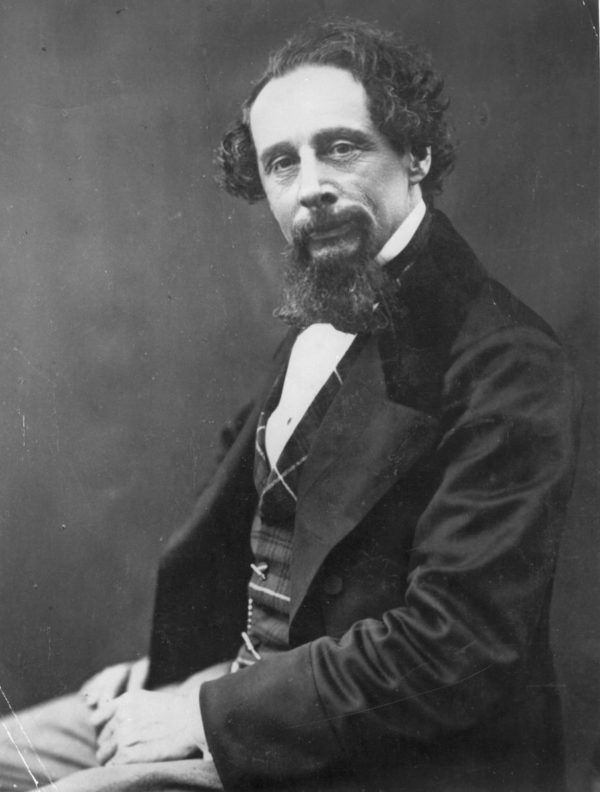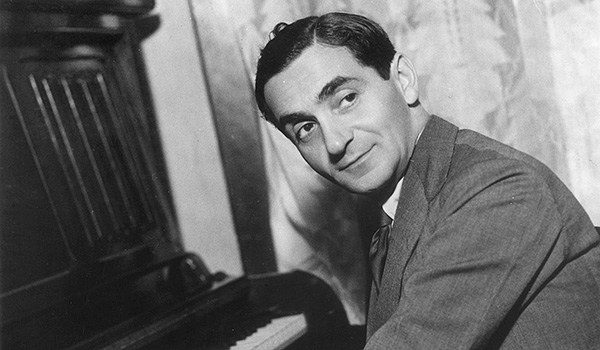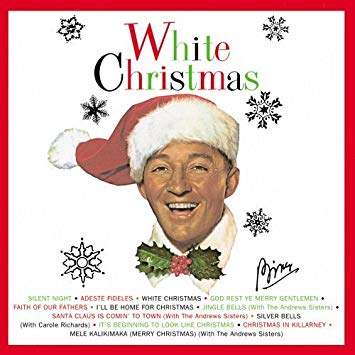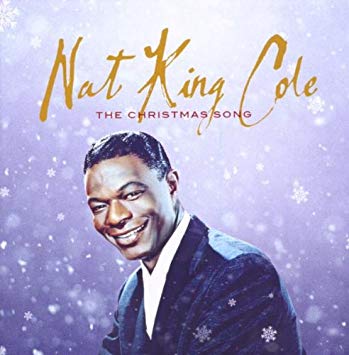Here We Come a-Carol-ing
It’s that most wonderful time of the year! Well, it’s the loudest, anyway. Christian, Muslim, Jew or Pagan, it’s virtually impossible to avoid Christmas Carols in America during any given December. Classic yuletide tunes drift from every store’s PA system; street corner musicians put their jazzy spin on holiday favorites; radio stations devote all their programming hours to seasonal music; church, school and community choirs belt out a litany of sacred and secular harmonies; TV ads for everything from cars to candies are scored to jolly jingles. It’s the interminable symphonic backdrop of the Christmas Crush, that frenzied, hectic, crazy-making post-Thanksgiving mad dash to pick the presents, wrap them, string the lights, deck the halls, trim the tree, bake the cookies, buy the festive foods and (e)mail the festive cards.
Is it any wonder we turn our bleared eyes to the heavens, begging release? And what do we find there? MORE Christmas! Yup; it’s inescapable. Asteroids Yule and Carol join seasonal favorites Santa and Rudolf in circumnavigating the skies and circumventing our best efforts to locate just one scrap of territory that is a holiday-free zone.
Well, if you can’t beat ‘em, join ‘em! What follows is a by-no-means comprehensive look at just how these holiday polyhymnal planetoids have affected the persons most associated with Christmas.

Charles Dickens, who revolutionized Victorian England’s yuletide spirit with four spirits of his own, in “A Christmas Carol”
Let’s start with the Big Man himself. No – not Santa! I’m talking about nineteenth century literary colossus Charles Dickens, whose 1843 novella “A Christmas Carol” did as much and more than anything else to cement Christmas’ image as reflective of respectable middle class values of family, love and charity (before those stodgy Victorians, Christmas had a much more rowdy, raucous, street festival or carnival flair).
After Santa (which Dickens, as a good Victorian Englishman, had nothing whatsoever to do with), Dickens’ character of Ebenezer Scrooge, the miser who repents his fiscal sins and inhumanity to others after a quartet of spirits puts the fear of death in him, is perhaps the most influential and recognizable figure associated with the holiday. Scrooge’s transformation from misanthrope to philanthropist struck a chord in Industrial Revolution era England, with its child labor, poor houses and sweatshops. Everyone from Lionel Barrymore, Reginald Owen, Edmund Gwenn, Alistair Sim, Albert Finney, George C. Scott and Patrick Stewart to Mickey Rooney, Michael Caine, Tim Allen, Kelsey Grammer, Jim Carey, Mister Magoo and Mickey Mouse has portrayed Scrooge on stage, radio, screen or television; more than 500 adaptations in all.
2017’s theatrical release “The Man Who Invented Christmas”, a fanciful biography of Dickens, may be very near hitting the mark in its bold assertion. Born 7 February 1812 at 7:50 PM LMT in Portsmouth, England (Rodden Rating A), Charles Dickens sports both asteroid Carol at 24 Virgo and asteroid Yule at 28 Aquarius in dynamic relation to Uranus, that mother of inventiveness, at 23 Scorpio (Carol in sextile, Yule in square), allowing Dickens to create a unique and groundbreaking (both Uranus) take on the holiday, incorporating Carol into its very title! Additionally, Carol conjoins the 18 Virgo Ascendant, squares Jupiter at 26 Gemini, and trines Mercury at 22 Capricorn. “A Christmas Carol” was formative in establishing Dickens’ fame and reputation (both Jupiter) as a writer (Mercury), and at least on this side of the Atlantic, it’s the work he’s best remembered for, an integral part of his enduring public image (Ascendant).
Asteroid Karma at 23 Capricorn, aligned with Mercury and closely trined Carol, suggests a fated or predestined quality to the piece. This is borne out when we see “A Christmas Carol”’s publication date, 19 December 1843. Asteroid Dickens, named for the wordsmith himself, closely conjoins natal Carol from 25 Virgo, squared the 27 Sagittarius transit Sun (bringing public focus and recognition) and inconjunct Jupiter (publishing) at 24 Aquarius, itself conjoined Dickens’ natal Yule, hyping or “amping-up” that element of his psyche. Asteroid Carol at 12 Cancer opposes Venus at 16 Capricorn, conferring popular acclaim, and forms a Thor’s Hammer pattern with transit Yule at 29 Scorpio and Jupiter, sesquiquadrate to each. The moral and ethical considerations raised in the work (which revolve around societal responsibilities to the poor) also fall under Venus’ bailiwick, and in its day “A Christmas Carol” purportedly caused more than a few industrialists to give their workers the day off, and to at least think about relieving the harshness of their job conditions the rest of the year.
If Dickens’ “A Christmas Carol” has the holiday prose market cornered, surely composer Irving Berlin holds pride of place as the man most behind the season’s ever-present tunefulness. After penning “White Christmas”, Berlin enthused, “I just wrote the best song I’ve ever written—heck, I just wrote the best song that anybody’s ever written!” And he might just be right – “White Christmas” still holds the record, not just for the most popular holiday song ever, but the most popular single ever released! With more than 100 million copies sold globally, “White Christmas” has been performed and recorded by more vocal and musical artists than anyone can count, and remains the staple offering of the season.

Composer Irving Berlin, whose “White Christmas” became the best-selling single of all time; his Sun conjoins Carol and squares Yule
Born 11 May 1888 (no time available), Irving Berlin’s 21 Taurus Sun is closely conjoined by asteroid Carol at 20 Taurus, and broadly squares asteroid Yule at 13 Leo. Berlin’s innate abilities with music and lyrics are established by both Mercury at 22 Taurus and Neptune at 29 Taurus in combination with Sun/Carol. “White Christmas”, which came almost a full century after Dickens, is undoubtedly the most enduring of Berlin’s many melodious offerings, destined to maintain his fame well into the 21st century and beyond.
And of those 100 million “White Christmas” copies sold, more than 50 million belong to the classic version by Bing Crosby, who gave the first public performance of the tune on Christmas Day 1941 at the Kraft Music Hall, then recorded the single in May 1942. That little ditty made Crosby the best-selling recording artist of all time, an honor that’s not likely to be eclipsed anytime soon.

Bing Crosby is the vocal artist most identified with “White Christmas”, with more than 50 million copies sold globally; his Sun conjoins Yule and opposes Carol
Born 3 May 1903 (no time available), like Berlin, Crosby also sports solar contacts to both holiday asteroids. His 12 Taurus Sun conjoins Yule at 8 Taurus, while opposing Carol at 16 Scorpio. Career-ruling Saturn at 9 Aquarius forms a T-Square, and while Crosby was already a well-established and popular singer at the time, “White Christmas” cemented a very special place for him in the pantheon of American entertainers. Jupiter’s influence on his reputation and fame from this endeavor can also be seen, in its sextile and trine to the Sun/Yule-Carol polarity, from 16 Pisces.
For the remainder of this article I’m indebted for my random sampling of Christmas carolers to a local Philadelphia radio station, B101.1, which annually surrenders their airwaves to holiday music for the six weeks from mid-November through Christmas. Every year, B101 exhorts its listeners to rate its seasonal offerings, then airs its countdown of the most popular 101 yuletide tunes. The top five selections rarely vary, though they might jostle their order slightly, and I thought that might be as good a place as any to extend my research of these asteroids, as exemplifying the most popular songs of the season.
Oddly, Crosby’s “White Christmas” usually comes in at #6 or #7 in this survey, just outside the scope of the selected data for this article, but his place in this field is unassailable, as we’ve seen above. So let’s take a look at the other artists who fill in the top slots.

Andy Williams, known as “Mr. Christmas”, recorded eight holiday music albums, and has Sun opposed Yule and trine Carol
Andy Williams, whose Christmas specials were a much-anticipated hallmark of the season from the 1960s into the 1980s, recorded eight albums of Christmas music and was known as “Mr. Christmas” from the popularity of these, especially his hit song “It’s the Most Wonderful Time of the Year”. This recording invariably claims top honors in the B101 survey, and this year is accompanied at #5 by his “Happy Holiday”, giving Williams two spots at the top of the list.
Born 3 December 1927 at 6 AM CST in Wall Lake, Iowa (Rodden Rating AA), Williams’ natal exact Sun/Saturn paring at 10 Sagittarius opposes asteroid Carol at 7 Gemini and trines asteroid Yule at 7 Aries, confirming the importance of seasonal tunes to Williams personally (Sun) as well as in his career (Saturn). The solar contacts are perfect for someone who became so identified with the holiday as to be termed “Mr. Christmas.” Adding to Yule’s impact is its stationary status, turning direct at that degree on November 22nd, less than two weeks before his birth, making it a powerful, embedded feature of Williams’ biography.

Johnny Mathis’ first Christmas Album, of five, was released in 1958 and quickly established the singer as a force in holiday harmony
Coming in at #4 on the B101 list is Johnny Mathis with “It’s Beginning to Look a Lot Like Christmas”. Mathis’ signature style seems tailor-made for the holidays, mellow and heart-warming, and Christmas albums formed an important part of his musical output, with five released over the course of his career. Born 30 September 1935 at Noon CST in Gilmer, Texas (Rodden Rating AA), Mathis’ 6 Libra Sun is inconjunct asteroid Yule at 10 Pisces, which also conjoins Saturn at 4 Pisces and squares Mars at 9 Sagittarius. Asteroid Carol at 20 Virgo conjoins musical Neptune at 15.
And what would Christmas be without Nat King Cole crooning about chestnuts roasting on an open fire? #3 in the survey is Cole’s rendition of “The Christmas Song”, perhaps the best-known version of the Mel Torme classic (though Cole’s “Unforgettable” is likely his best-remembered pop hit). Born 17 March 1919 at 3 AM CST in Montgomery, Alabama (Rodden Rating AA), Cole’s natal Yule at 17 Pisces and Carol at 24 Virgo widely oppose each other, with Carol trined the image-ruling Ascendant at 26 Capricorn and Yule trined the career-and-reputation-minded MC at 15 Scorpio, helping to identify Cole strongly with the holiday.

What Christmas could be complete without Nat King Cole, whose rendition of “The Christmas Song” remains the most popular to date?
At #2 in the B101 survey is Burl Ives with “Holly Jolly Christmas”, a holiday classic culled from the score of the “Rudolph the Red-Nosed Reindeer” animated TV special, which Ives also narrated as Sam the Snowman, and for which he additionally recorded the title track and “Silver and Gold”, another favorite on the B101 list (though rather farther down). Born 14 June 1909 at 6 AM CST in Hunt, Illinois (Rodden Rating B), Ives sports a chart as tapped into Christmas as you might expect from someone whose most enduring legacy is the beloved holiday special. The Sun at 22 Gemini conjoins Mercury and Pluto at 23 and 25 Gemini, granting that deep, resonant voice, and forms a T-Square with asteroids Carol at 27 Sagittarius and Yule at 24 Virgo, establishing Christmas as central to his self-identity.

Singer-actor Burl Ives with his Rudolph alter ego Sam the Snowman; with the Sun in a T-Square with Yule and Carol, Christmas was a natural fit
It seems wherever we turn in our quest for the songs of the season, the music of the spheres, in the form of suitably styled asteroids, is right there to back us up. Even in a random sampling based on a radio station’s Christmas song popularity survey, Yule and Carol are the celestial gifts that keep on giving.


